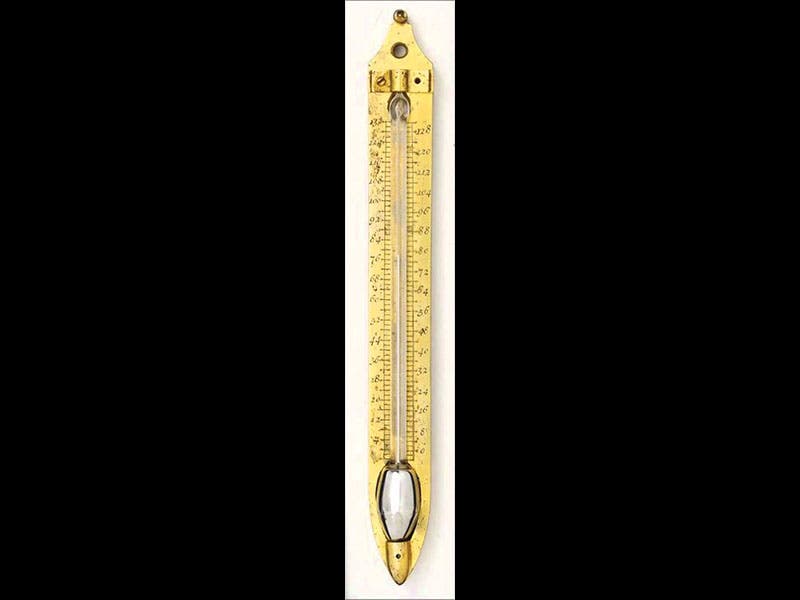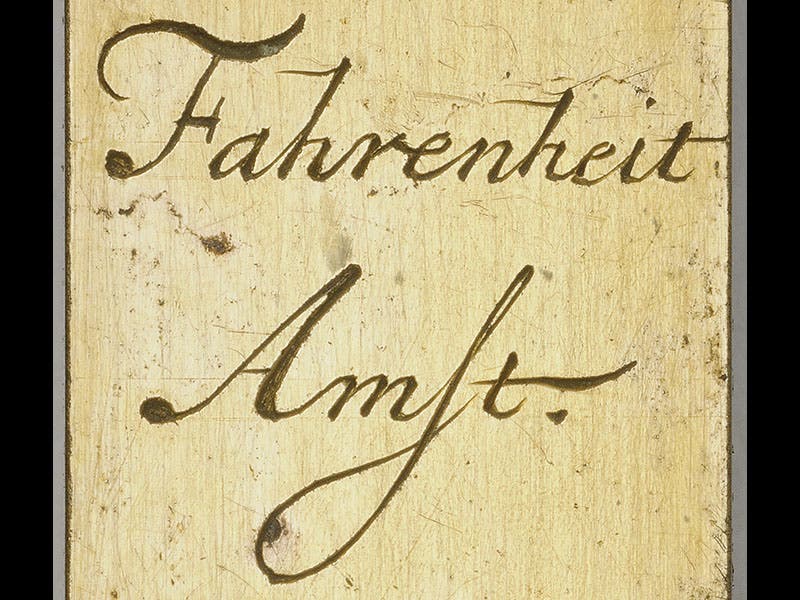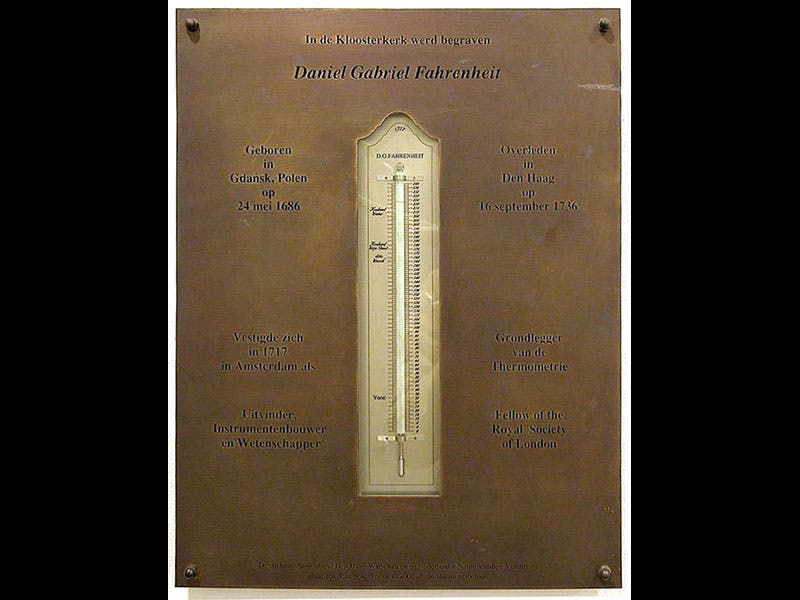Scientist of the Day - Daniel Fahrenheit
Daniel Fahrenheit, a German/Dutch instrument maker, was born May 24, 1686. As you probably have guessed, Fahrenheit developed the temperature scale that we in the United States still stubbornly use. If you have ever wondered how he ended up with a thermometer where water freezes at 32 degrees and boils at 212, you won't find the complete answer here, because it is a very convoluted story, but we offer a start.
Fahrenheit got the basic idea for his temperature scale from a Dane, Ole Roemer, who put a thermometer bulb in a mixture of salt, water, and ice, and called it zero. On Roemer's scale, pure water then froze at 7 1/2 degrees, and body temperature was 22 1/2 degrees. Fahrenheit divided each of Roemer's degrees into four units, making the temperature of freezing water 30 degrees and body temperature 90. For complicated reasons, Fahrenheit preferred that body temperature be 96 degrees, so he stretched the scale a bit. And then he took his scaled thermometer and measured the temperature of boiling water, and it came out to be 212. So that part wasn't planned at all, just the way it worked out.
Some people like to give the credit to Roemer and prefer to call it the Roemer scale, but that seems unwarranted, since Roemer never used his thermometer for anything, made only a few instruments in his lifetime, and never published on the subject. Fahrenheit published 5 papers on his thermometer in the Philosophical Transactions of the Royal Society of London (all 5 papers in one busy year, 1724), and very explicitly gave us the zero, 32, 96 (later corrected to 98.6), and 212 degree benchmarks. Fahrenheit is buried in The Hague, and there is a large Fahrenheit thermometer on the outside of his tomb (third image above). One assumes that it works, and that it gives us the temperature of the ambient air, and not of Fahrenheit's mortal remains. There is no authentic known portrait of Fahrenheit.
In 2012, an original Fahrenheit thermometer, with his signature on the back, was auctioned at Christie’s (first and second images). At the auction website, one may still find an image of the thermometer, and it is fully zoomable. Notice that when they took the picture, the temperature was 78° F, so that was a toasty auction warehouse. The thermometer sold for £67,250 ($107,802), a tidy sum. We expect the bidding was hot and spirited.
Dr. William B. Ashworth, Jr., Consultant for the History of Science, Linda Hall Library and Associate Professor, Department of History, University of Missouri-Kansas City. Comments or corrections are welcome; please direct to ashworthw@umkc.edu.









